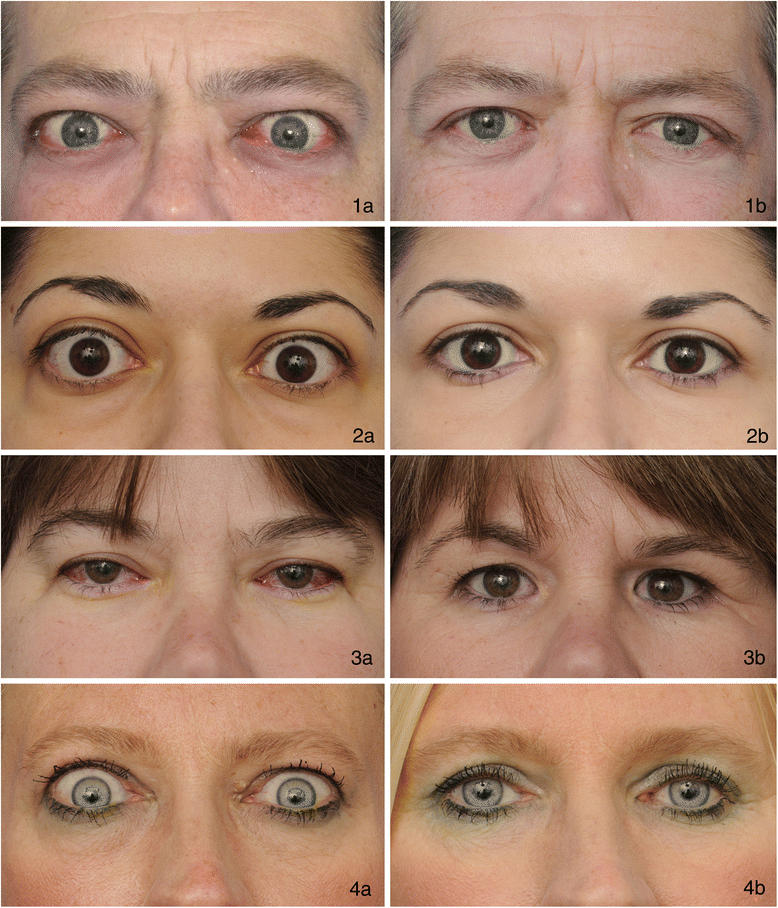Update on thyroid-associated Ophthalmopathy with a special emphasis on the ocular surface
- PMID: 28702253
- PMCID: PMC5471935
- DOI: 10.1186/s40842-016-0037-5
Update on thyroid-associated Ophthalmopathy with a special emphasis on the ocular surface
Abstract
Thyroid-associated ophthalmopathy (TAO) is a condition associated with a wide spectrum of ocular changes, usually in the context of the autoimmune syndrome, Graves' disease. In this topical review, we attempted to provide a roadmap of the recent advances in current understanding the pathogenesis of TAO, important aspects of its clinical presentation, its impact on the ocular surface, describe the tissue abnormalities frequently encountered, and describe how TAO is managed today. We also briefly review how increased understanding of the disease should culminate in improved therapies for patients with this vexing condition.
Keywords: Graves’ disease; Ocular surface; Ophthalmopathy; Orbit; Thyroid.
Figures

References
-
- Wiersinga WM. Thyroid autoimmunity. Endocr Dev. 2014;26:139–57. - PubMed
Publication types
Grants and funding
LinkOut - more resources
Full Text Sources
Other Literature Sources

